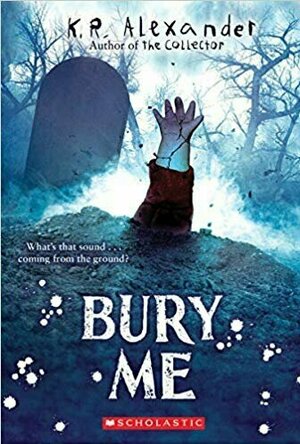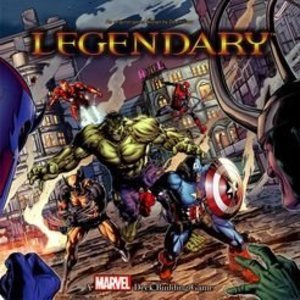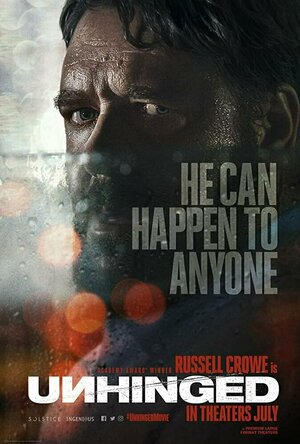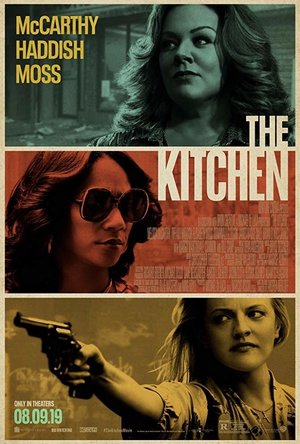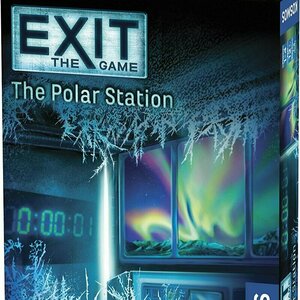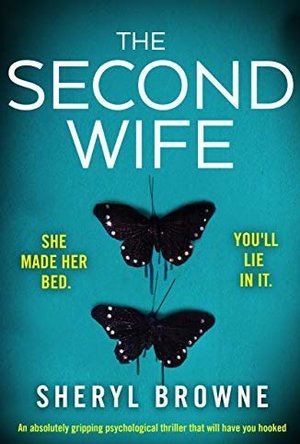Search
Search results

AudioNote™
Business and Productivity
App
Take notes with recorded audio using the best note taking app in the App Store! AudioNote combines...
Great writing (1 more)
Unpredictable
Some typos (1 more)
The mom was a waste of a character
In horror books and movies, we often see dolls as the main source of scares( such as Annabelle or Child's Play). In K.R. Alexander's Bury Me we get another scary doll to add to the list with some pretty good spine chilling moments, too.
We start with Kimberly Rice, who is a kid with a vivid imagination that can imagine up anything her heart desires, but because of this, people don't believe her when strange things begin to happen in Copper Hollow. She has two friends named Alicia and James- - -but Kimberly feels like she doesn't fit in with them because they live in houses while she lives in a trailer. "I wait for them to say, Hey, Kimberly, do you want to come over for dinner? They don't. They never have. It hurt my feelings at first, but I got over it fast. They're still my best and only friends, so I can't really complain when they don't have me over to their houses. It's not like I can really invite them over to mine. " Kimberly explains.
Although she states that they are her best friends, there is another part that may suggest otherwise. At first, we read about Kimberly being ashamed of her home although she states she has never tried to invite her friends over - - - as far as we know - - - but during a scene where Kimberly goes over to Alicia's home for help with this doll, Alicia doesn't invite her inside, which Kimberly points out.
But Kimberly's dysfunctional friendships aren't what the story is about. The book is about a doll that suddenly shows up with the words 'bury me' written across its dress in black ink. The perfect setting for a horror story. Kimberly teams up with her friends, Alicia and James, to figure out what this doll wants.
Alicia convinces Kimberly to do what the doll's dress says: 'bury me.' But even after they do this, the doll somehow shows up again, without having disturbed its burial place. They finally begin to question whether or not the doll is possessed by an evil spirit because the doll's mouth moves on its own, making frowns and even seeming to silently scream at one point, and no matter what they do, the doll always comes back completely intact. Yet, the only one the doll seems to be 'haunting' is Kimberly, although James and Alicia participate in trying to get rid of it. Kimberly is also haunted by dreams that aren't exactly her own, but she doesn't reveal these to her friends- - - which doing so may have helped in the long run. As a result, the friends never really figure out how to get rid of the doll, it seems that only Kimberly's dreams can figure this out (it just takes her nearly the entire book to figure it out).
The horror elements in this story are pretty good, but as the book recommended age states, it's for pre-teens. Yet, Alexander did a better job on this than 'The Collector' when it came to those elements. I honestly really enjoyed this book, even as an adult.
We continue with Alicia and James beginning to question Kimberly, thinking that this is just a prank she has come up with because their town is boring: " 'Did you do this?' Alicia asks, looking straight at me. Once more, my heart throbs- - -but this time, with a note of anger.
'Why would I do something like this?' I ask.
'Because Copper Hollow is boring and you're trying to make it fun with another one of your wild stories?' She doesn't sound accusatory; she sounds like she's running out of options that make sense, and she doesn't like that at all. "
Kimberly also has to deal with a history book on Copper Hollow that only shows blank pages to her, even when she shows it to adults, they seem to go into a daze as if the book doesn't even exist to them. Even when she asks the Mayor about this very book, he has no idea what she's speaking of. " I try to change the subject. 'I finished that book. The one about our history.'
'Book? ' Mayor Couch asks. 'What book?'
'The one I showed you.'
He chuckles. 'You and your imagination. I don't remember you showing me a book. ' "
Readers and Kimberly still have no idea what is going half way through the book. "Something weird is going on with him. It makes me wonder. . . is it linked to the doll? Or maybe he just has some sort of memory loss? "
While Kimberly is going through all of this, her mother seems like a wasted character to introduce. She, who is rarely home and works double shifts throughout the entire book, is never there for Kimberly, but also,Kimberly never goes to her mother for help.
The story starts quickly, getting right into the doll appearing, and by the end, we learn something that was not predictable - - -this is good writing. Bury Me is what YA horror books should be: suspense, unpredictable moments and likable characters. And compared to Alexander's first book, The Collector, his story telling is getting better to the point that I am looking forward to reading his other recent books, but hopefully he sticks to telling stories with children and not adults.
I highly recommend this book to fans of R.L. Stine's 'Goosebumps,' because I truly believe we have our next R.L. Stine. Great story, great writing.
We start with Kimberly Rice, who is a kid with a vivid imagination that can imagine up anything her heart desires, but because of this, people don't believe her when strange things begin to happen in Copper Hollow. She has two friends named Alicia and James- - -but Kimberly feels like she doesn't fit in with them because they live in houses while she lives in a trailer. "I wait for them to say, Hey, Kimberly, do you want to come over for dinner? They don't. They never have. It hurt my feelings at first, but I got over it fast. They're still my best and only friends, so I can't really complain when they don't have me over to their houses. It's not like I can really invite them over to mine. " Kimberly explains.
Although she states that they are her best friends, there is another part that may suggest otherwise. At first, we read about Kimberly being ashamed of her home although she states she has never tried to invite her friends over - - - as far as we know - - - but during a scene where Kimberly goes over to Alicia's home for help with this doll, Alicia doesn't invite her inside, which Kimberly points out.
But Kimberly's dysfunctional friendships aren't what the story is about. The book is about a doll that suddenly shows up with the words 'bury me' written across its dress in black ink. The perfect setting for a horror story. Kimberly teams up with her friends, Alicia and James, to figure out what this doll wants.
Alicia convinces Kimberly to do what the doll's dress says: 'bury me.' But even after they do this, the doll somehow shows up again, without having disturbed its burial place. They finally begin to question whether or not the doll is possessed by an evil spirit because the doll's mouth moves on its own, making frowns and even seeming to silently scream at one point, and no matter what they do, the doll always comes back completely intact. Yet, the only one the doll seems to be 'haunting' is Kimberly, although James and Alicia participate in trying to get rid of it. Kimberly is also haunted by dreams that aren't exactly her own, but she doesn't reveal these to her friends- - - which doing so may have helped in the long run. As a result, the friends never really figure out how to get rid of the doll, it seems that only Kimberly's dreams can figure this out (it just takes her nearly the entire book to figure it out).
The horror elements in this story are pretty good, but as the book recommended age states, it's for pre-teens. Yet, Alexander did a better job on this than 'The Collector' when it came to those elements. I honestly really enjoyed this book, even as an adult.
We continue with Alicia and James beginning to question Kimberly, thinking that this is just a prank she has come up with because their town is boring: " 'Did you do this?' Alicia asks, looking straight at me. Once more, my heart throbs- - -but this time, with a note of anger.
'Why would I do something like this?' I ask.
'Because Copper Hollow is boring and you're trying to make it fun with another one of your wild stories?' She doesn't sound accusatory; she sounds like she's running out of options that make sense, and she doesn't like that at all. "
Kimberly also has to deal with a history book on Copper Hollow that only shows blank pages to her, even when she shows it to adults, they seem to go into a daze as if the book doesn't even exist to them. Even when she asks the Mayor about this very book, he has no idea what she's speaking of. " I try to change the subject. 'I finished that book. The one about our history.'
'Book? ' Mayor Couch asks. 'What book?'
'The one I showed you.'
He chuckles. 'You and your imagination. I don't remember you showing me a book. ' "
Readers and Kimberly still have no idea what is going half way through the book. "Something weird is going on with him. It makes me wonder. . . is it linked to the doll? Or maybe he just has some sort of memory loss? "
While Kimberly is going through all of this, her mother seems like a wasted character to introduce. She, who is rarely home and works double shifts throughout the entire book, is never there for Kimberly, but also,Kimberly never goes to her mother for help.
The story starts quickly, getting right into the doll appearing, and by the end, we learn something that was not predictable - - -this is good writing. Bury Me is what YA horror books should be: suspense, unpredictable moments and likable characters. And compared to Alexander's first book, The Collector, his story telling is getting better to the point that I am looking forward to reading his other recent books, but hopefully he sticks to telling stories with children and not adults.
I highly recommend this book to fans of R.L. Stine's 'Goosebumps,' because I truly believe we have our next R.L. Stine. Great story, great writing.
Purple Phoenix Games (2266 KP) rated Legendary: A Marvel Deck Building Game in Tabletop Games
Sep 19, 2019
Teamwork makes the dream work! That’s how the saying goes, right? And in Legendary: A Marvel Deck Building Game, it is certainly the truth! When I say it’s a team-building game, I mean that both literally and figuratively – you must recruit heroes and work semi-cooperatively with your fellow gamers to defeat the evil Mastermind before they take over the city!
In an era where superheroes are the norm, the days of petty crime are over. As the protectors of our world have grown in power, so too have those who would see it fall to chaos. Out of the shadows comes a nefarious Mastermind who has engineered the most wicked evil scheme the world has ever seen. With an ever-growing band of followers and henchmen to carry out the plot, the future looks dismal. But do not fear – the supers are here! This job is way too big for only one single hero to handle, but if they all band together, then maybe, juuuust maybe, they might be able to pull it off…
DISCLAIMER: There are several expansions to this game, but we are not reviewing them at this time. Should we review them in the future we will either update this review or post a link to the new material here. -T
Set in the world of Marvel comics and, recently, the Marvel Cinematic Universe, Legendary: Marvel is a cooperative deck building game. Players take turns drafting and playing cards to recruit heroes to their team and to fight off the villains trying to carry out the sinister scheme. You have to strategize how you want to build your deck to best complete the mission – do you recruit heroes that give you special abilities (like drawing additional cards), or do you recruit strong heroes that give you lots of attack points? The choice is entirely up to you! Although all players are building their own individual decks, you must also devise a team strategy because all players either win or lose together as a team. That being said, there is a small competitive aspect to this game – the player with the most Victory Points (earned by defeating villains and rescuing bystanders) is deemed the most legendary hero of the game! Exactly how competitive the game gets is up to the players. I personally prefer a more cooperative approach and usually don’t tally up VPs at the end of the game – either the team won or we lost.
The beauty of this game is that it can be played with any combination of Marvel characters – you are not limited to only using specific teams. Selecting which heroes/villains/Mastermind/etc. to use is at the discretion of the players. Want Iron Man to team up with Deadpool and Wolverine to fight off Kingpin? Go for it! You have basically the entire Marvel universe from which to choose, so the sky is the limit! With so many options, though, it can be a little overwhelming, so I usually use a randomizer app to create a setup for me. Sometimes the setup itself will determine how the entire game will play out – certain combinations of Mastermind/villains/scheme can be BRUTAL to play and difficult to win. But the cool thing about this game is that you cannot just look at a setup and tell if it will be difficult or not – that realization only will come once you start playing!
I love playing this game because of its immense variability – the base game alone has 500 cards! The ability to choose your own heroes, villains, Masterminds, and Schemes means that you will probably never play the same game twice. And on top of that, Legendary: Marvel currently has like 19 expansions! The possibilities are truly endless, and that is the Holy Grail for me when it comes to gaming. I know that I will never get bored of this game because it is a different experience every game.
On the flip side, my main grievance with Legendary: Marvel is with the physical setup and teardown. Every play uses SO MANY cards that it does take a decent amount of time to get setup or put away. Every individual hero/villain/Mastermind/etc. must be sorted and stored separately, and with 500+ cards, that time adds up. When deciding on a game to play, sometimes I skip Legendary: Marvel because of the time it takes to set up. I LOVE to play it, but sometimes I do not feel like taking that much time to set up – I just want to play! My other grievance deals with certain hero superpowers/special card text. Some hero cards have special text, and the definitions are outlined in the rule book but not on the cards themselves. Until I learned/memorized what that special text meant, I was constantly referring back to the rule book nearly every turn to make sure I was using the cards correctly. There is a bit of a learning curve with some of the hero text, but it does get better the more you play!
Don’t let the simplicity of the mechanics fool you – this game requires more strategy than meets the eye! You must not only decide on a strategy for building your individual deck, but you and your teammates must also collectively choose a group strategy to defeat the Mastermind. Cooperation is key, and it really helps the theme of the game come to life. Definitely a winner for Purple Phoenix Games with a butt-kicking 24 / 24 and a well-earned Golden Feather Award!
In an era where superheroes are the norm, the days of petty crime are over. As the protectors of our world have grown in power, so too have those who would see it fall to chaos. Out of the shadows comes a nefarious Mastermind who has engineered the most wicked evil scheme the world has ever seen. With an ever-growing band of followers and henchmen to carry out the plot, the future looks dismal. But do not fear – the supers are here! This job is way too big for only one single hero to handle, but if they all band together, then maybe, juuuust maybe, they might be able to pull it off…
DISCLAIMER: There are several expansions to this game, but we are not reviewing them at this time. Should we review them in the future we will either update this review or post a link to the new material here. -T
Set in the world of Marvel comics and, recently, the Marvel Cinematic Universe, Legendary: Marvel is a cooperative deck building game. Players take turns drafting and playing cards to recruit heroes to their team and to fight off the villains trying to carry out the sinister scheme. You have to strategize how you want to build your deck to best complete the mission – do you recruit heroes that give you special abilities (like drawing additional cards), or do you recruit strong heroes that give you lots of attack points? The choice is entirely up to you! Although all players are building their own individual decks, you must also devise a team strategy because all players either win or lose together as a team. That being said, there is a small competitive aspect to this game – the player with the most Victory Points (earned by defeating villains and rescuing bystanders) is deemed the most legendary hero of the game! Exactly how competitive the game gets is up to the players. I personally prefer a more cooperative approach and usually don’t tally up VPs at the end of the game – either the team won or we lost.
The beauty of this game is that it can be played with any combination of Marvel characters – you are not limited to only using specific teams. Selecting which heroes/villains/Mastermind/etc. to use is at the discretion of the players. Want Iron Man to team up with Deadpool and Wolverine to fight off Kingpin? Go for it! You have basically the entire Marvel universe from which to choose, so the sky is the limit! With so many options, though, it can be a little overwhelming, so I usually use a randomizer app to create a setup for me. Sometimes the setup itself will determine how the entire game will play out – certain combinations of Mastermind/villains/scheme can be BRUTAL to play and difficult to win. But the cool thing about this game is that you cannot just look at a setup and tell if it will be difficult or not – that realization only will come once you start playing!
I love playing this game because of its immense variability – the base game alone has 500 cards! The ability to choose your own heroes, villains, Masterminds, and Schemes means that you will probably never play the same game twice. And on top of that, Legendary: Marvel currently has like 19 expansions! The possibilities are truly endless, and that is the Holy Grail for me when it comes to gaming. I know that I will never get bored of this game because it is a different experience every game.
On the flip side, my main grievance with Legendary: Marvel is with the physical setup and teardown. Every play uses SO MANY cards that it does take a decent amount of time to get setup or put away. Every individual hero/villain/Mastermind/etc. must be sorted and stored separately, and with 500+ cards, that time adds up. When deciding on a game to play, sometimes I skip Legendary: Marvel because of the time it takes to set up. I LOVE to play it, but sometimes I do not feel like taking that much time to set up – I just want to play! My other grievance deals with certain hero superpowers/special card text. Some hero cards have special text, and the definitions are outlined in the rule book but not on the cards themselves. Until I learned/memorized what that special text meant, I was constantly referring back to the rule book nearly every turn to make sure I was using the cards correctly. There is a bit of a learning curve with some of the hero text, but it does get better the more you play!
Don’t let the simplicity of the mechanics fool you – this game requires more strategy than meets the eye! You must not only decide on a strategy for building your individual deck, but you and your teammates must also collectively choose a group strategy to defeat the Mastermind. Cooperation is key, and it really helps the theme of the game come to life. Definitely a winner for Purple Phoenix Games with a butt-kicking 24 / 24 and a well-earned Golden Feather Award!
Lee (2222 KP) rated Unhinged (2020) in Movies
Sep 2, 2020
The opening credits for Unhinged paint a pretty bleak and horrific snapshot of human life, just to get us in the mood for what’s to come. Footage of actual road rage incidents, supermarket disagreements and brawls, cars crashing into each other, all while recordings of news readers talk about how stressed and angry we all are these days. I think that in the current climate, we can all appreciate just how angry the world seems to have become these last few months, and some of these scenes really hit home.
We’d already seen just how angry Russell Crowe’s character is (billed as ‘The Man’, although he later introduces himself as Tom Cooper), courtesy of a shocking little pre-credits scene. Sitting in his car at night, rain beating down on the car as he breathes heavily and pops some pills into his mouth. Slowly turning a wedding ring on his finger, he removes it, tossing it behind him onto the backseat. Taking a hammer, he gets out of the car and walks to the front door of the house he’d parked outside, before smashing it down and proceeding to use the hammer on the occupants. He’s clearly not the kind of person you want to get on the wrong side of.
The person that does manage to get on his wrong side is Rachel (Caren Pistorius), who’s also having a pretty bad day of her own. Waking up late on the sofa, we learn that she’s currently going through a divorce, with her ex-husband wanting her house. She’s also late in taking her son to school, so when they hit heavy traffic along the way, it’s the last thing she needs.
At some traffic lights, the large SUV she’s sitting behind doesn’t budge when the lights turn green, so Rachel lets out a series of long beeps on the horn, before eventually pulling around the SUV to continue on her way. Unfortunately for her though, when they hit more traffic further down the road, the SUV pulls up alongside her, and when the window rolls down, we see that it’s ‘The Man’ behind the wheel. He’s calm at first, if a little on edge, but after apologising for his mistake, demands the same from Rachel before they go their separate ways. Unfortunately though, Rachel isn’t prepared to offer an apology. “I need you to learn what a bad day is and I need you to learn how to say sorry” he growls, before Rachel pulls away, believing that to be the end of it.
What follows is an intense game of cat and mouse, as ‘The Man’ relentlessly stalks Rachel through the roads and highways. Just to make things worse, ‘The Man’ manages to get hold of Rachel’s phone and starts to threaten and target her close friends and family. We’ve already seen just how Unhinged he can be, and there’s more of that as the movie progresses and he gets a chance to carry out some of those threats. He’s not just out to kill Rachel, but to give her the worst possible day he can before that moment arrives.
Crowe is suitably menacing – overweight and sweaty, taking out anyone who gets in his way and methodical in his determination to catch Rachel. The movie does try to humanise him a little at times though, as we discover that he’s been through a relationship breakdown, and was laid off work just a few weeks short of retiring, as if trying to provide some justification for his behaviour.
Unhinged comes in at just over 90 minutes and proved to be a real intense, gut wrenching roller-coaster ride. I don’t know if I was just a bit giddy at being back in the cinema for the first time since March, but I found it to be a lot of fun.
We’d already seen just how angry Russell Crowe’s character is (billed as ‘The Man’, although he later introduces himself as Tom Cooper), courtesy of a shocking little pre-credits scene. Sitting in his car at night, rain beating down on the car as he breathes heavily and pops some pills into his mouth. Slowly turning a wedding ring on his finger, he removes it, tossing it behind him onto the backseat. Taking a hammer, he gets out of the car and walks to the front door of the house he’d parked outside, before smashing it down and proceeding to use the hammer on the occupants. He’s clearly not the kind of person you want to get on the wrong side of.
The person that does manage to get on his wrong side is Rachel (Caren Pistorius), who’s also having a pretty bad day of her own. Waking up late on the sofa, we learn that she’s currently going through a divorce, with her ex-husband wanting her house. She’s also late in taking her son to school, so when they hit heavy traffic along the way, it’s the last thing she needs.
At some traffic lights, the large SUV she’s sitting behind doesn’t budge when the lights turn green, so Rachel lets out a series of long beeps on the horn, before eventually pulling around the SUV to continue on her way. Unfortunately for her though, when they hit more traffic further down the road, the SUV pulls up alongside her, and when the window rolls down, we see that it’s ‘The Man’ behind the wheel. He’s calm at first, if a little on edge, but after apologising for his mistake, demands the same from Rachel before they go their separate ways. Unfortunately though, Rachel isn’t prepared to offer an apology. “I need you to learn what a bad day is and I need you to learn how to say sorry” he growls, before Rachel pulls away, believing that to be the end of it.
What follows is an intense game of cat and mouse, as ‘The Man’ relentlessly stalks Rachel through the roads and highways. Just to make things worse, ‘The Man’ manages to get hold of Rachel’s phone and starts to threaten and target her close friends and family. We’ve already seen just how Unhinged he can be, and there’s more of that as the movie progresses and he gets a chance to carry out some of those threats. He’s not just out to kill Rachel, but to give her the worst possible day he can before that moment arrives.
Crowe is suitably menacing – overweight and sweaty, taking out anyone who gets in his way and methodical in his determination to catch Rachel. The movie does try to humanise him a little at times though, as we discover that he’s been through a relationship breakdown, and was laid off work just a few weeks short of retiring, as if trying to provide some justification for his behaviour.
Unhinged comes in at just over 90 minutes and proved to be a real intense, gut wrenching roller-coaster ride. I don’t know if I was just a bit giddy at being back in the cinema for the first time since March, but I found it to be a lot of fun.
365Flicks (235 KP) rated Leopard (2016) in Movies
Nov 20, 2019
A Beautiful, Twisted, Dark, Intense and Mesmerizing tale of Betrayal, Violence and Heart Breaking Brotherly Love..
Anyone who listens to ourleopard5-1 Podcast knows that while Chris and myself love the fanfare of the Huge Blockbuster Marvel/DC/Star Wars releases. Well nothing can quite compare to the
smaller Independent Films that you just know every second of screen time came straight from one persons passion to make a piece of Cinema that is all there’s. A movie that can display such mastery of there craft and hit you square in the heart (or balls) and make you feel something that… In my opinion Capes and Spandex just cant do.
Leopard is available On Demand this month from Osiris Entertainment.
Leopard is exactly that type of movie. A true passion piece that is driven by the wonderfully carefully calculated mind of its Writer/Director/Actor, BUT smashed out of the park by his outstanding team of Actors. Most revleopard6iews and articles I have read liken this movie to the wonderful Paris,Texas but I personally thought it had a feeling of Shane Meadows Dead Man Shoes.
Leopard tells the story of Jack (Eoin Macken. Merlin, NBCs Night Shift Also the Writer/Director) and his brother Tom (Tom Hopper. Merlin, Black Sails). Jack is returning to his home town in Ireland after a prolonged absence and it is clear from the outset he is not all that welcome. We find that his father has passed away and he is back for the reading of the Will along with his brother Tom who is not all there (Think Lenny from Mice and Men). There relationship is fairly strained and we spend the course of the movie figuring out what happened 5 years ago and where that has left the two brothers now. Throw in some Hostile locals, A left for Dead girl to become the point of Toms fixation and a creepy Strip Club, you have leopard.
Chris and I cannot speak highly enough of this movie it ticks all of our boxes when looking for something a little bit different. The Irish setting not only makes for a great backdrop but also becomes a character within itself. The score to this movie is often hopeful and optimistic but full of eerie dread at the same time, truly wonderful. Eoin and Tom bring a level of chemistry you would hope for after there time together on Merlin. However I am going to say it here and now Tom Hopper is a Brit star to watch out for he smashed this out of the park. There is also a damn fine supporting cast in Jack Reynor (Transformers: Age of Extinction) Rebecca Night (Sky 1s The Starlings) and Helen Pearson (Mrs O from Hollyoaks).
Anyone who listens to ourleopard5-1 Podcast knows that while Chris and myself love the fanfare of the Huge Blockbuster Marvel/DC/Star Wars releases. Well nothing can quite compare to the
smaller Independent Films that you just know every second of screen time came straight from one persons passion to make a piece of Cinema that is all there’s. A movie that can display such mastery of there craft and hit you square in the heart (or balls) and make you feel something that… In my opinion Capes and Spandex just cant do.
Leopard is available On Demand this month from Osiris Entertainment.
Leopard is exactly that type of movie. A true passion piece that is driven by the wonderfully carefully calculated mind of its Writer/Director/Actor, BUT smashed out of the park by his outstanding team of Actors. Most revleopard6iews and articles I have read liken this movie to the wonderful Paris,Texas but I personally thought it had a feeling of Shane Meadows Dead Man Shoes.
Leopard tells the story of Jack (Eoin Macken. Merlin, NBCs Night Shift Also the Writer/Director) and his brother Tom (Tom Hopper. Merlin, Black Sails). Jack is returning to his home town in Ireland after a prolonged absence and it is clear from the outset he is not all that welcome. We find that his father has passed away and he is back for the reading of the Will along with his brother Tom who is not all there (Think Lenny from Mice and Men). There relationship is fairly strained and we spend the course of the movie figuring out what happened 5 years ago and where that has left the two brothers now. Throw in some Hostile locals, A left for Dead girl to become the point of Toms fixation and a creepy Strip Club, you have leopard.
Chris and I cannot speak highly enough of this movie it ticks all of our boxes when looking for something a little bit different. The Irish setting not only makes for a great backdrop but also becomes a character within itself. The score to this movie is often hopeful and optimistic but full of eerie dread at the same time, truly wonderful. Eoin and Tom bring a level of chemistry you would hope for after there time together on Merlin. However I am going to say it here and now Tom Hopper is a Brit star to watch out for he smashed this out of the park. There is also a damn fine supporting cast in Jack Reynor (Transformers: Age of Extinction) Rebecca Night (Sky 1s The Starlings) and Helen Pearson (Mrs O from Hollyoaks).
Armie Hammer recommended Apocalypse Now (1979) in Movies (curated)
Jesters_folly (230 KP) rated The Kitchen (2019) in Movies
Sep 24, 2019
Contains spoilers, click to show
When their mobster husbands are all sent to prison, three women decide that the only way they can survive is to take over their criminal enterprise’s, the quest is can their friendship last.
The Kitchen is based on comics released by DC Vertigo and is set in ‘Hell’s Kitchen’, New York during the 1970’s and focus’ on the lives of the wives of an Irish/American mob and their struggle to maintain a basic life style once their husbands have been arrested. Each of the women have a different type of relationship with their husbands; Kathy is in a seemingly normal, loving relationship, Claire is in an abusive relationship and Ruby is in a mixed marriage which is looked down on by alto for the other characters. One of the threads of the film is how each woman reacts to their husbands being away and what will happen when they return.
First off, this is not a comedy, I have seen some reviews where people seem to have been expecting a few laughs, mainly because of the casting of Melissa McCarthy and Tiffany Haddish. The Kitchen has violence, abuse, attempted rape, bad language, lots of guns, prostitutes and shootings but no humour. I think there was only one time anyone laughed (in the cinema audience) and that was when the characters were being shown how to dispose of a dead body.
I have to say that this is a good, well written female lead film, the premise is not forced and there is a reason the characters are female and in a situation that women would not normally be in, especially for the time it is set. Even though the characters are slightly stereotyped (The beaten woman trying to get stronger, the loving wife trying to keep things together) they are not turned into a joke or overly exaggerated and is a big step up from the Ghostbuster’s remake which also had McCarthy as part of an all-female team. Like Ghostbusters there is also a male character who helps the team, Gabriel, but the Kitchen avoids turning him into a joke unlike Chris Hemsworth in ghostbusters.
It could be said that the way the male characters are portrayed is bad, most of them are either thugs, stupid or crazy but this not due to any kind of feminism agenda but is a slightly stereotyped view of how a segment of people were seen, most of the people they deal with are the Irish/American mobsters. This is also shown by the Italians; they are not portrayed in the same way.
I do get the feeling that The Kitchen will be remembered more for scenes and its characters than for the overall movie as there are some bits that seem to drag but, overall it is a film worth watching.
The Kitchen is based on comics released by DC Vertigo and is set in ‘Hell’s Kitchen’, New York during the 1970’s and focus’ on the lives of the wives of an Irish/American mob and their struggle to maintain a basic life style once their husbands have been arrested. Each of the women have a different type of relationship with their husbands; Kathy is in a seemingly normal, loving relationship, Claire is in an abusive relationship and Ruby is in a mixed marriage which is looked down on by alto for the other characters. One of the threads of the film is how each woman reacts to their husbands being away and what will happen when they return.
First off, this is not a comedy, I have seen some reviews where people seem to have been expecting a few laughs, mainly because of the casting of Melissa McCarthy and Tiffany Haddish. The Kitchen has violence, abuse, attempted rape, bad language, lots of guns, prostitutes and shootings but no humour. I think there was only one time anyone laughed (in the cinema audience) and that was when the characters were being shown how to dispose of a dead body.
I have to say that this is a good, well written female lead film, the premise is not forced and there is a reason the characters are female and in a situation that women would not normally be in, especially for the time it is set. Even though the characters are slightly stereotyped (The beaten woman trying to get stronger, the loving wife trying to keep things together) they are not turned into a joke or overly exaggerated and is a big step up from the Ghostbuster’s remake which also had McCarthy as part of an all-female team. Like Ghostbusters there is also a male character who helps the team, Gabriel, but the Kitchen avoids turning him into a joke unlike Chris Hemsworth in ghostbusters.
It could be said that the way the male characters are portrayed is bad, most of them are either thugs, stupid or crazy but this not due to any kind of feminism agenda but is a slightly stereotyped view of how a segment of people were seen, most of the people they deal with are the Irish/American mobsters. This is also shown by the Italians; they are not portrayed in the same way.
I do get the feeling that The Kitchen will be remembered more for scenes and its characters than for the overall movie as there are some bits that seem to drag but, overall it is a film worth watching.
Purple Phoenix Games (2266 KP) rated Exit: The Game – The Polar Station in Tabletop Games
Mar 11, 2022
One thing that has grown in popularity over the recent years are Escape Rooms. You know, where you’re physically trapped inside a room and have to solve various puzzles, crack codes, and beat the clock in an effort to get out before it’s game over. It should come as no surprise that this premise has made its way into the world of board gaming. Yeah, you’re not physically trapped somewhere, but you still have tons of puzzles to sort out in the fastest time you can. So how does this EXIT game hold up when compared with a real-life escape room? Keep reading to find out!
Disclaimer: In order to avoid spoilers, I will not be going too in depth with this review, but rather provide a general overview of the type of gameplay involved. Also, this review covers one specific EXIT game, but the general mechanics and gameplay are the same across the entire EXIT family.
In EXIT: The Game – The Polar Station (simply referred to as just EXIT from hereon out), you are a member of a research team stationed in the Arctic. One morning, the evacuation alarm goes off unexpectedly, and everyone makes a break for the helicopters. Just one problem for your crew – your exit door is already locked and sealed! You make your way to another section of the lab to look for an alternate escape route. What you find is a room full of locked drawers/doors. You must quickly crack these codes, in hopes that the materials contained within will aid you in your attempts to escape before the final rescue helicopter takes off.
To setup for a game, sort the cards into their appropriate decks – Riddle cards, Answer cards, and Help cards. Place the Decoder disk and the Book in the center of the table. Leave the other items in the game box, to be introduced later in the gameplay. You will also most likely need a pen/pencil and paper to help you as you solve the riddles. And bam! You’re ready to start. You may then open the Book and begin the game. The game ends if or when players are able to successfully solve all of the riddles/puzzles and make their escape from the polar station.
Without spoilers, that’s basically as much detail as I can provide. Over the course of the gameplay, players will be using the pages of the Book to find clues, solve puzzles, or even identify secret symbols. Riddle cards will be drawn and used as ciphers, puzzles, or clues to help crack a code. When you think you have the correct 3-digit code for a specific Riddle Card, enter the code onto the Decoder disk. The disk will then provide the number of an Answer card, which you will draw and check to see if you were correct or incorrect. If your answer is incorrect, you simply keep trying to solve the Riddle card. If your answer is correct, you will then be instructed to draw other Riddle Cards, or the other items from the game box, and will continue with these new puzzles. If at any point in time you feel stuck, you may draw a Help card for the corresponding puzzle. The first and second Help cards will give you hints, and the final Help card will tell you the solution to the puzzle. Draw these sparingly if you can, as they affect your end-game score!
When all puzzles/riddles/codes have been completed and cracked, the game is over. Players will then check the rulebook to see how many Stars were earned, out of 10. The number of Help cards you use, as well as how much time you took to complete the game, will affect the overall score.
All in all, I think that EXIT is a unique game. The games of the series have varying difficulty levels, and this particular EXIT is rated a 3 out of 5. So this one isn’t the most difficult game in the bunch, but it wasn’t easy either! All of the puzzles require creative solutions, and the answers are rarely ever as straight-forward as they appear. Some puzzles are more logical than others, while some require you to physically manipulate components to be used in creative ways. I guess that’s as good a segue as any to get into components. This game consists of a deck of cards, a Decoder disk, a Book, and a couple of special ‘items.’ All decent quality overall. But here’s the thing – you will have to bend/cut/manipulate/destroy many of the components to help you in your mission to solve the riddles. So this game is literally a one-and-done. It cannot be played again.
Did I enjoy my play of this EXIT game? Yes. It was uniquely challenging, while forcing me to think creatively when addressing the different riddles. The method used to solve one riddle is not necessarily the same to solve the next, so you have be able to adjust on the fly. And often times you will have several riddles in play at once, so you have to decide which to address and when, when do you have the right information, which riddle it goes with, etc.
The biggest drawback for me is that it cannot be played again, The fact that you have to alter the components to a point of destroying the original card is something that was personally hard for me to get used to. I try to keep all my games so nice and pristine, that having to cut a card apart was tough! I got over it though. Having played a couple of the EXIT games, as well as a few of the Unlock! games, I would have to say I prefer the Unlock! system. The puzzles are just as challenging and creative, but you do not need to alter components to complete the game. That way, I can pass along an Unlock! game to a friend, as opposed to just tossing this EXIT game right in the recycling bin. I might pick up another EXIT game if I had a specific group/game night in mind, but in general I don’t think I’ll be grabbing any more of these, for the lack of replayability alone. The gameplay itself is pretty great, but the fact that I can’t play it again is a con I can’t ignore. Purple Phoenix Games gives this one a chilling 4 / 6.
Disclaimer: In order to avoid spoilers, I will not be going too in depth with this review, but rather provide a general overview of the type of gameplay involved. Also, this review covers one specific EXIT game, but the general mechanics and gameplay are the same across the entire EXIT family.
In EXIT: The Game – The Polar Station (simply referred to as just EXIT from hereon out), you are a member of a research team stationed in the Arctic. One morning, the evacuation alarm goes off unexpectedly, and everyone makes a break for the helicopters. Just one problem for your crew – your exit door is already locked and sealed! You make your way to another section of the lab to look for an alternate escape route. What you find is a room full of locked drawers/doors. You must quickly crack these codes, in hopes that the materials contained within will aid you in your attempts to escape before the final rescue helicopter takes off.
To setup for a game, sort the cards into their appropriate decks – Riddle cards, Answer cards, and Help cards. Place the Decoder disk and the Book in the center of the table. Leave the other items in the game box, to be introduced later in the gameplay. You will also most likely need a pen/pencil and paper to help you as you solve the riddles. And bam! You’re ready to start. You may then open the Book and begin the game. The game ends if or when players are able to successfully solve all of the riddles/puzzles and make their escape from the polar station.
Without spoilers, that’s basically as much detail as I can provide. Over the course of the gameplay, players will be using the pages of the Book to find clues, solve puzzles, or even identify secret symbols. Riddle cards will be drawn and used as ciphers, puzzles, or clues to help crack a code. When you think you have the correct 3-digit code for a specific Riddle Card, enter the code onto the Decoder disk. The disk will then provide the number of an Answer card, which you will draw and check to see if you were correct or incorrect. If your answer is incorrect, you simply keep trying to solve the Riddle card. If your answer is correct, you will then be instructed to draw other Riddle Cards, or the other items from the game box, and will continue with these new puzzles. If at any point in time you feel stuck, you may draw a Help card for the corresponding puzzle. The first and second Help cards will give you hints, and the final Help card will tell you the solution to the puzzle. Draw these sparingly if you can, as they affect your end-game score!
When all puzzles/riddles/codes have been completed and cracked, the game is over. Players will then check the rulebook to see how many Stars were earned, out of 10. The number of Help cards you use, as well as how much time you took to complete the game, will affect the overall score.
All in all, I think that EXIT is a unique game. The games of the series have varying difficulty levels, and this particular EXIT is rated a 3 out of 5. So this one isn’t the most difficult game in the bunch, but it wasn’t easy either! All of the puzzles require creative solutions, and the answers are rarely ever as straight-forward as they appear. Some puzzles are more logical than others, while some require you to physically manipulate components to be used in creative ways. I guess that’s as good a segue as any to get into components. This game consists of a deck of cards, a Decoder disk, a Book, and a couple of special ‘items.’ All decent quality overall. But here’s the thing – you will have to bend/cut/manipulate/destroy many of the components to help you in your mission to solve the riddles. So this game is literally a one-and-done. It cannot be played again.
Did I enjoy my play of this EXIT game? Yes. It was uniquely challenging, while forcing me to think creatively when addressing the different riddles. The method used to solve one riddle is not necessarily the same to solve the next, so you have be able to adjust on the fly. And often times you will have several riddles in play at once, so you have to decide which to address and when, when do you have the right information, which riddle it goes with, etc.
The biggest drawback for me is that it cannot be played again, The fact that you have to alter the components to a point of destroying the original card is something that was personally hard for me to get used to. I try to keep all my games so nice and pristine, that having to cut a card apart was tough! I got over it though. Having played a couple of the EXIT games, as well as a few of the Unlock! games, I would have to say I prefer the Unlock! system. The puzzles are just as challenging and creative, but you do not need to alter components to complete the game. That way, I can pass along an Unlock! game to a friend, as opposed to just tossing this EXIT game right in the recycling bin. I might pick up another EXIT game if I had a specific group/game night in mind, but in general I don’t think I’ll be grabbing any more of these, for the lack of replayability alone. The gameplay itself is pretty great, but the fact that I can’t play it again is a con I can’t ignore. Purple Phoenix Games gives this one a chilling 4 / 6.
Molly J (Cover To Cover Cafe) (106 KP) rated The Second Wife in Books
Mar 25, 2019
Suspense (2 more)
Characters
Plot Line
This Book Is A Cosmic Roller Coaster Of Thrills and Chills!
Do you ever come across a book that is absolutely mind boggling, leaving you scraping what’s left of your jaw, up off the floor because the entire time you read it, you were in awe, and on the edge of your seat? Yea, well I was just like that with this book here. The Second Wive is a cosmic explosion of twists, turns, and unexpected elements as you fly through this book. I read it a month or so ago, via NetGalley, and oh my word. There are no words to describe how this book made me feel.
Every minute of Rebecca’s life changing experiences became my own. Every pounding heart beat, mine. Every questionable thought, mine. Every. Thing. Mine. Watching what she went through as she stepped into her deceased friend’s life as the second wife…..well, sometimes, I had to stop reading because it became that intense for me. Watching her uncover the truth, watching her fears form….it was utterly chilling at times.
With Rebecca’s and Richard’s characters, you have the perfect blend of good and evil. But, the question is this: are they really good, evil and who they say they are? Browne did a fantastic job of waiting til the very end to let her readers know just what they wanted answered. These characters take your heart and squeeze…..squeeze so hard, your heart feels like it might burst and then, at the end of this white-knuckle thriller, you can finally breathe again. Your heart starts beating again, your breath starts to even out, your mind starts to think about all you just endured to reach the end.
If you looking for a book full of laughs and romance, don’t buy this book. You won’t like it if that’s what you are expecting. If you are looking for a book that will make you drool because your jaw is opened like a codfish the entire time, then buy this book. If you are looking for a page-turner, edge-of-seat, white-knuckle, heart pounding to bursting experience, then absolutely, without a doubt, 100% buy this book. You will not be disappointed and you will be giving it 5 star praises as I did. Fantastically down, Browne. Fantastically done.
*I received a complimentary copy of this book from NetGalley, Bookouture and was under no obligation to post a review, positive or negative.*
Every minute of Rebecca’s life changing experiences became my own. Every pounding heart beat, mine. Every questionable thought, mine. Every. Thing. Mine. Watching what she went through as she stepped into her deceased friend’s life as the second wife…..well, sometimes, I had to stop reading because it became that intense for me. Watching her uncover the truth, watching her fears form….it was utterly chilling at times.
With Rebecca’s and Richard’s characters, you have the perfect blend of good and evil. But, the question is this: are they really good, evil and who they say they are? Browne did a fantastic job of waiting til the very end to let her readers know just what they wanted answered. These characters take your heart and squeeze…..squeeze so hard, your heart feels like it might burst and then, at the end of this white-knuckle thriller, you can finally breathe again. Your heart starts beating again, your breath starts to even out, your mind starts to think about all you just endured to reach the end.
If you looking for a book full of laughs and romance, don’t buy this book. You won’t like it if that’s what you are expecting. If you are looking for a book that will make you drool because your jaw is opened like a codfish the entire time, then buy this book. If you are looking for a page-turner, edge-of-seat, white-knuckle, heart pounding to bursting experience, then absolutely, without a doubt, 100% buy this book. You will not be disappointed and you will be giving it 5 star praises as I did. Fantastically down, Browne. Fantastically done.
*I received a complimentary copy of this book from NetGalley, Bookouture and was under no obligation to post a review, positive or negative.*
Neon's Nerd Nexus (360 KP) rated The Rhythm Section (2019) in Movies
Feb 2, 2020
Beats Me
The Rhythm Section is mismatch of La Femme Nikita, Atomic Blonde and all the Bourne films however it constantly skips so many beats that it just cant keep up the pace let alone be put in the same league as any of them. I feel the Spy film genre had largely started to become lazy over the last few years it seems like directors go for either style over substance or just replicate whats already been done and The Rhythm Section seems to try its hand at both. Its a film that im not entirely sure we needed because its filled with genre cliches and relocations of scenes/ideas from other films that have done it much better. Our main character for instance is liffted straight from La Femme Nikita and not only is her transformation process almost exactly the same but the way she looks becomes near identical too. Music integration is ripped from Atomic Blonde it just takes place in a different decade and what litte action sequences there are have been seen in the Bourne films. So as you can imagine I spent most of the film sat thinking "what is the point?", "why do I need to see this again?" and as the film traveled along the same old tracks boredom and fatigue started to settle in. Now im not saying Blake Lively or Jude Law are bad far from it they are both just miscast and deserve much better than this (if anything their scenes and chemistry together are the only thing saving this movie from being a total wash out). Theres almost no point in talking about the story because its of the most generic forgettable kind and while there is some suspense and excitement to be had its in relatively brief burts for a film that has a run time of nearly two hours. During these two hours nothing really happenes either and thats its biggest problem nothing feels like its been achieved and its final pay off especially feels disappointingly weak and higly unfulfilling. I would say theres about 3 short action scenes total and while the fight choreography is splendid and the car chase is exhilarating they are over in a flash and you are again subject to tedium before you arrive at another. End of the day I feel this movie wasted my time and while its not by any means horrible its just extremely unnecessary. Even last years Anna was way more fun and exciting than this.
